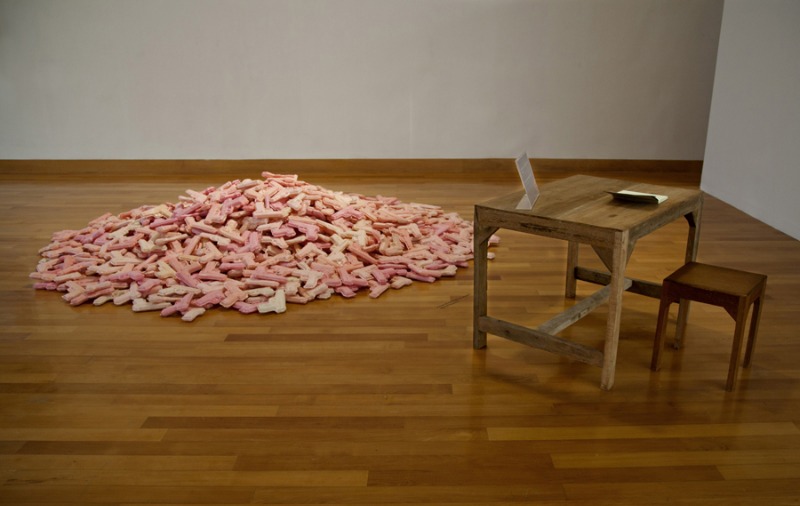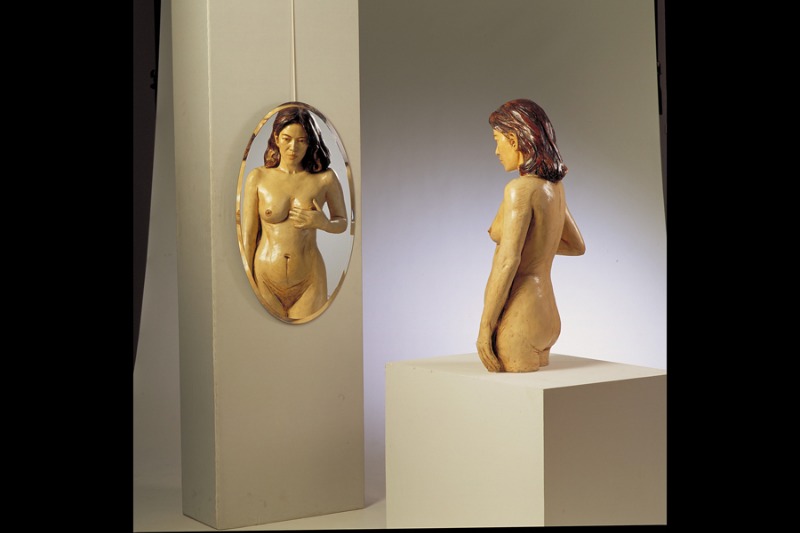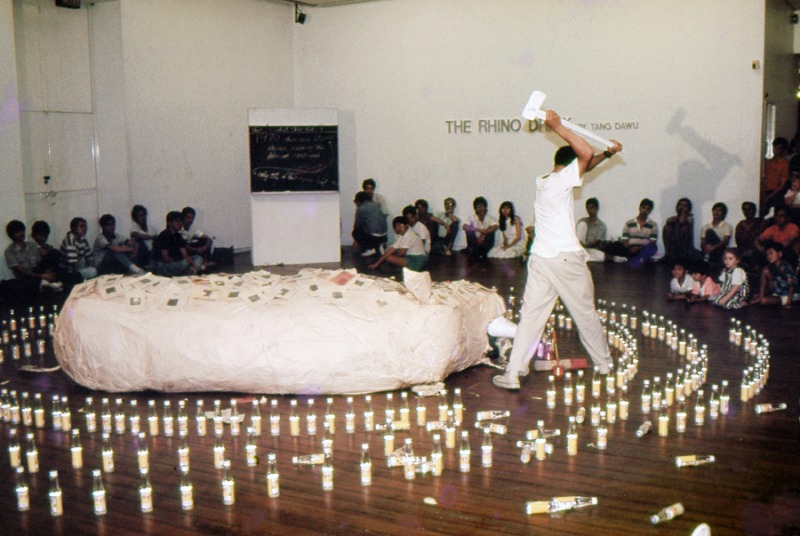
| Period| | 2019.01.31 - 2019.05.06 |
|---|---|
| Operating hours| | Tuesday, Wednesday, Thursday, Friday, 10:00am - 06:00pm Saturday at 10:00am - 09:00pm (Free viewing at 06:00pm to 09:00p |
| Space| | National Museum of Modern and Contemporary Art in Gwacheon |
| Address| | 313, Gwangmyeong-ro, Gwacheon-si, Gyeonggi-do, Republic of Korea |
| Closed| | January 1st, Monday |
| Price| | Free |
| Phone| | 02-2188-6000 |
| Web site| | 홈페이지 바로가기 |
| Artist| |
줄리 루크,탕다우
|
정보수정요청



|
|
Exhibition Information




The National Museum of Modern and Contemporary Art (Park Wee-jin, acting director of the museum's task force), will be holding the 1960s-1990s Exhibition of Asian Art and Society in the MMCA's Gwacheon 1,2 Exhibition Hall from Jan. 31 to May 6. This exhibition is an international exhibition of modern Asian art that was conducted during the social, political and cultural changes of each country from the 1960s to the 1990s. It was jointly organized by the National Museum of Modern and Contemporary Art, Tokyo National Museum of Modern and Contemporary Art, Singapore National Museum of Art, and the Asia Center of the Japan International Exchange Fund, and was organized based on a four-year investigation and study. Some 170 works by 100 major artists from 13 Asian countries, including South Korea, Japan, China, Taiwan, Hong Kong, Singapore, Malaysia, Indonesia, the Philippines, Thailand, India, Myanmar and Cambodia, will be presented. From the 1960s to 1990, Asia experienced radical social changes such as decolonization, ideological confrontation, the Vietnam War, nationalist rise, modernization and democratization movements. In this, artists regarded the attitude of "resistance" to authority and customs and "liberating" from oppression as important. He also led an experimental art trend that challenged existing art concepts, categories and art systems. The awareness of self-reliance and criticism of Western modernism has emerged of a new art movement, breaking away from" art for art" and grasping art in the context of society and attempting various aesthetics. Radical and experimental art practices appeared at different times in different countries, with Korea, Japan and Taiwan in the 1960s and 1970s, Singapore, Malaysia, Indonesia, Philippines, Thailand and India in the 1970s and 1980s, and China in the 1980s and 1990s. The exhibition title "Opening Your Eyes to the World" means that the new trend in Asian contemporary art during this period was not self-awareness from the outside or from the West, but voluntarily through political awareness from within, different artistic attitudes, and the emergence of new actors. The exhibition consists of three parts: "I doubt the structure," "Artists and Cities" and "New Solidarity." Part 1 "suspicious of structure" deals with the period when society, politics and culture have rapidly changed since the mid-20th century, the boundaries of art have been put to the test and art justice has begun to change. Instead of traditional media such as paintings and sculptures, they use materials from their bodies or daily lives to present works that express various aspects of life. The main works are S. Freiyanto (Indonesia) French Hat, Lee Seung-taek (Korea) Firing Paint floating down the stream, Lee Kang-so (Korea) <Declaration of the Sun, Nakanishi Natsuyuki (Japan), <Compact of Singapore), <Tangda〈, Curtain, and Zhang O'Tai, < Part two, "Artists and Cities," sheds light on how the newly emerging urban environment affected the artist's works and art practice following his rapid modernization and industrialization since the 1960s. Cities were both a source of rich visual material for artists and a stage of expression, while being criticized for social contradictions derived from urbanization. This section covers the various artistic attitudes and ways in which artists look at the city (hwa. It also takes note of the performance of avant-garde artists who sought to realize "integration of art and daily life" and "communication of art and society" by penetrating into urban spaces such as streets, subways and parks outside the White Cube. Oyun (Korea) Sepmarketing I: Helldo Island, Kenpei Akasegawa (Japan) 0 yen note, Wangjin Ice 96 Jungwon Farms, Kim Gu-rim (Korea), <1/24, Meaning of Indonesia), Nalini Malani (India) 3(India, U.S.A.) Part 3 The New Regiment focuses on the social role of art. Since the 1960s, South Korea, the Philippines, Thailand, Taiwan and Indonesia have experienced common military regimes and democratic movements. Based on the collective "union of Thai Artists," such as Thailand's "Kaishahan" and Korea's "People's Art Movement," it will introduce a large number of works of art activism that challenged power, social taboos and ideologies. During this period, an experimental group of artists pursued composite genre art activities such as performance, play and sound based on interdisciplinary cooperation emerged, with the fourth group of Korea and Japan's The Play and Yutaka Matsuzawa, China's Beijing East Village and other behaviors and experiments, as well as the Asian Collective, which crosses play and art, also forms an important axis of the exhibition. The main works include Hiroshi Nakamura (Japan), Pavlo Baens Santos (Philippines), Zhang Huan (China), Zhang Huan (China), <Sound of Japan), and Wong Ho-cheng (Malaysia) and others. Realizing social communication amid drastic changes in democracy, decolonization and anti-modernism, Asian art exposes unexpected resonance across time and space when viewed transnationally beyond the state. The exhibition not only depicts the dynamic topography of contemporary Asian art where diversity coexists, but also reinforces Western-oriented art history descriptions, opening up new possibilities in Asia. On January 31, the opening day of the exhibition, <Contact of Asian Contemporary Art> will be held at Gwacheon Hall. Curators and major writers from each country who co-organized the exhibition will attend the event to help them understand the exhibition through presentations and dialogues. After closing May 6, the exhibition will tour the National Museum of Art in Singapore from June 14 (Friday) to September 15. Meanwhile, actor Park Geon-hyung is eyeing the world: Asian art and society, and a recording of the commentary on the 1960s-1990s It is expected to help people understand and appreciate the exhibition with a soft yet energetic voice. Audio guides are available for free through the National Museum of Modern and Contemporary Art's mobile app. For more information, visit the National Museum of Modern and Contemporary Art's website at(www.mmca.go.kr)
